Ecology in the company Saker
ABOUT RECYCLING
The recycling enables to save the renewable as well as non-renewable sources of raw materials and significantly contributes to the protection of the ecological stability of the environment.
Non-ferrous metals still belong to the most important industrial materials. The high rate of their recycling thus very significantly lowers the burden on the environment. In comparison to the raw metal, the recycled scrap saves energy, minerals, water and lowers the negative impact on the environment.
The sorted out scrap of the non-ferrous metals is a valuable raw material for the production of new semi-products. An important factor is the „sorted out“ scrap which may be used directly for the produced semi-products.
Non-ferrous metals are still preferred to the replacement materials and are unreplaceable in many domains for their long service life, good machining capacity, resistance to temperatures and possibility of recycling.

ENVIRONMENTAL POLICY
The environmental policy of the company is based on commitment, knowledge and managing abilities of the company management, technical experts and employees that influence the environment in all the localities where the company SAKER spol. s r.o. operates.
The organisation creates the general conscience on the fact that all the processes, activities and products may lead to interventions to the environment.
The organisation undertakes in the area of the organisation policy to:
- Maintain the legal regulations in force relating to the protection of environment(laws, decrees, regulations);
- Try to eliminate or minimise the negative impacts of activities, products and services on the environment, employees health and health of the inhabitants living in the surroundings;
- Not to prefer the economic aspects to the ecological aspects;
- Lower the energetic demand of activities and products;
- Focus on maximising the use and minimising the waste of the technological processes;
- Implement a complex education system for the employees in the domain of the environmental protection in order to increase their awareness and enlarge necessary knowledge;
- Cooperate with the state administration bodies and interest groups in order to respect the state and regional environmental policy;
- Maintain the principle of the sustainable development with the focus on the efficient use and implementation of environmental friendly technologies. Take the expertise, possible danger and proposal for efficient prevention of negative impacts and accidents including their consequences as starting point;
- Ensure the sources for environment management system in order to constantly improve the environment management system in order to increase the environmental performance.
Extent of the environmental management system:
The organisation took into consideration all the aspects and defined that the environmental management system in accordance with this manual relates to the entire company, for the following activities:
- Waste management;
- Business in the domain of the dangerous waste manipulation;
- Production and metallurgical processing of the non-ferrous metals and their alloys.
Extent of incorporation:
- Operation site of SAKER: Na Sádkách 3475, 767 01 Kroměříž
- Operation site of ALUSAK o. z., Na Sádkách 3572, 767 01 Kroměříž
In Kroměříž on 15/01/2018
NON-FERROUS METALS AND THEIR ALLOYS
Aluminium
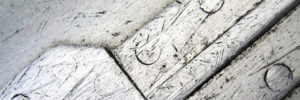
Aluminium (Al) is a very light metal of light grey colour, it is a very good conductor of electrical current, it is widely used in electro-technical industry and in form of alloys in the aircraft industry and many other applications.
Aluminium alloys
Alloys with copper and magnesium
These alloys are known under the name dural. They are the most frequently used alloys for shaping used in the automobile and aircraft industry as for the parts working under normal temperatures.
Alloys with copper and nickel
They have a higher resistance to temperatures and they are used at the parts with the operating temperature up to 300°C, e.g. engine pistons.
Alloys with zinc and magnesium
These are the most rigid alloys of aluminium with the tensile strength of up to 600 MPa.
Alloys with magnesium
They have increased resistance to corrosion and are used in the chemical as well as food industry.
Copper
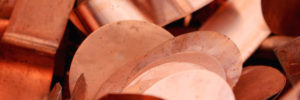
Copper is known for its very good thermal and electrical conductivity, it is well mechanically processed and it is resiatant to the atmospheric corrosion. It is the basic indredient of many very important alloys for the electro-technical industry.
Alloys of copper
Bronze
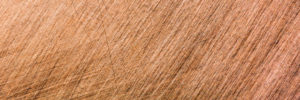
Bronze is the alloy of copper and tin or some other metals in small quantities like for example aluminium, manganese, lead (except for zinc when the alloy is called brass). The bronze cast parts are now used e.g. for the production of bearings, gears, armatures, flanges and others. The amount of the purchase price is often given by the state. It depends on whether it is clean bronze or an alloy making the quality of the material worse.
Brass

Brass is the alloy of copper and zinc. Yellow brass has about 35% of zinc. It has a wide range of uses in light mechanics, electro-technology. Brass has a good machining capacity, it is resistant to corrosion, it looks nice and has a good conductivity. Brass Ms63 is used for the production of sheets and tubes. Bars and machined profiles are made of brass Ms58.
Zinc
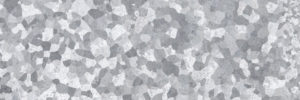
Zinc is a tender easily cast metal. It serves as a part of various alloys, zinc has suitable characteristics for the production of castings. One of the most important zinc alloys is the alloy with copper – brass.
Stainless steel
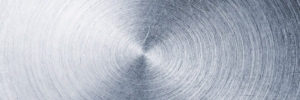
Stainless steel is a strongly alloyed steel with higher resistance to chemical and electrochemical corrosion. As the corrosion resistant steels contain a high number of leguras, 12 to 30 % of chrome, up to 30 % of nickel or up to 24 % of manganese and others, it is always an alloy of carbon and iron, i.e. steel.
The use of the corrosion-resistant steels is wide, from the chemical and food industry through the automobile industry, construction industry as well as architectonical material, production of ships, etc.

